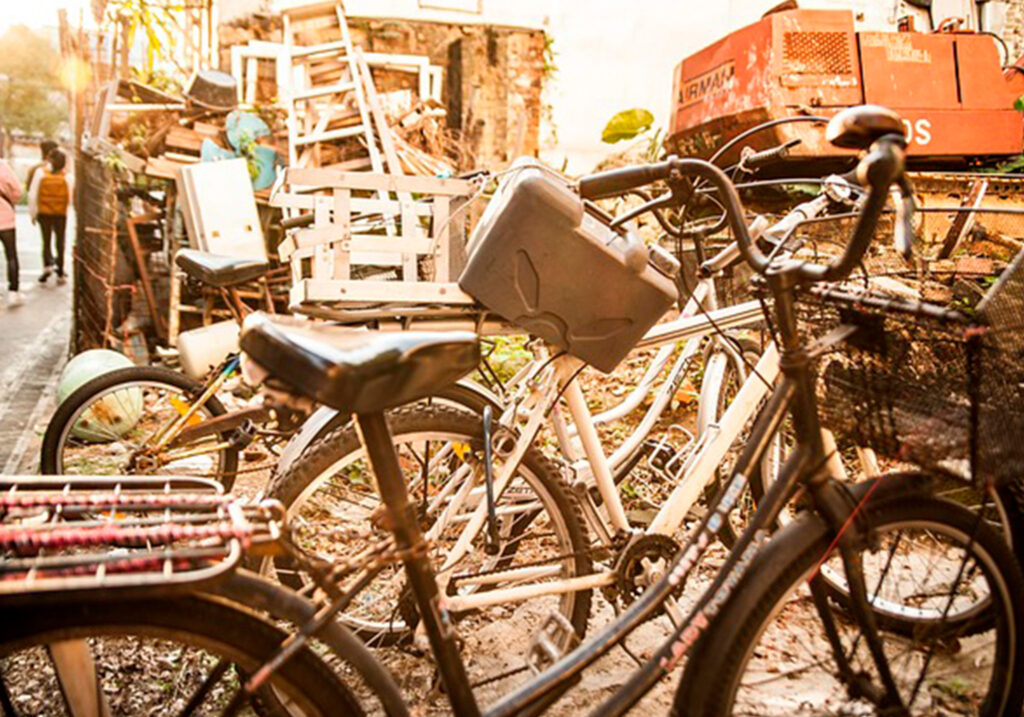We often hear the words “Safety first,” and rightly so. More than anything else, our safety is of utmost concern when it comes to work, going to the grocery, eating out, or just staying home.
Of course, this also applies to how you use your garage.
The garage often serves as a multipurpose space in a home, acting as a storage unit for tools, seasonal decorations, sports equipment, and more. While it is a convenient space to stash items, cluttered garages can pose significant risks to safety and functionality. Beyond being unsightly, an overcrowded and disorganized garage can become a hotspot for accidents, health hazards, and inefficiency.
This article delves into the various dangers of garage clutter and offers insights into why maintaining an organized space is essential.
Let’s start.
Fire Hazards
One of the most significant dangers of a cluttered garage is the increased risk of fire. Garages often house flammable materials such as gasoline, motor oil, paint, and cleaning supplies. When these items are stored improperly or mixed with clutter, the risk of ignition rises dramatically.
Loose rags soaked in chemicals, piles of paper, or cardboard boxes stacked haphazardly can serve as kindling for a small spark that may escalate into a large blaze. Additionally, electrical outlets and extension cords buried under clutter can overheat, leading to short circuits and electrical fires. Poor ventilation in a cluttered garage exacerbates the problem, as it allows fumes from stored chemicals to accumulate and potentially ignite.
To minimize these risks, it’s crucial to store flammable materials in proper containers and keep them away from heat sources. Regularly inspecting and maintaining electrical systems can also prevent electrical fires. By decluttering the garage, you create an environment that is safer and more fire-resistant.
Tripping and Falling Risks
A cluttered garage is a minefield of potential trip hazards. Tools, garden hoses, sports equipment, and other items left scattered on the floor can easily cause someone to lose their footing. Such accidents can lead to injuries ranging from minor scrapes to severe fractures.
The risk is especially high in dimly lit garages where visibility is limited. Stacked boxes and items precariously balanced on shelves add another layer of danger, as they can topple over unexpectedly. For children or elderly individuals, the hazards are even more pronounced due to their reduced ability to navigate obstacles safely.
Keeping walkways clear and using proper storage solutions, such as wall-mounted racks or overhead shelves, can significantly reduce tripping risks. Installing adequate lighting also ensures that potential hazards are more visible, making the garage a safer space for everyone.
Pest Infestations
A disorganized garage filled with boxes, old furniture, and debris is an open invitation for pests. Rodents, insects, and spiders thrive in dark, cluttered environments where they can find shelter and nesting materials. Once pests establish themselves in the garage, they can spread to other areas of the home, causing further problems.
Rodents, in particular, can chew through electrical wiring, creating both a fire hazard and the need for expensive repairs. They may also contaminate stored items with droppings and urine, posing health risks. Insects such as termites can damage wooden items, while spiders may create webs in hard-to-reach corners, making the garage even less inviting.
Decluttering the garage reduces the hiding spots available to pests, making the space less hospitable. Sealing cracks and gaps, properly storing food or pet supplies, and regularly cleaning the area can further deter infestations.
Toxic Chemical Exposure
Many garages double as storage spaces for household chemicals, including pesticides, cleaning agents, and automotive fluids. When these substances are stored improperly or in an overcrowded environment, the risk of accidental exposure increases.
Leaking containers can release toxic fumes or spill onto other items, creating a hazardous situation. Children and pets are particularly vulnerable to accidental poisoning if they come into contact with these chemicals. Additionally, poorly labeled or unlabeled containers can lead to dangerous mix-ups during use.
To ensure safety, chemicals should be stored in clearly labeled, sealed containers and kept on sturdy shelves away from reach. A well-organized garage prevents accidental spills and makes it easier to locate and handle potentially dangerous substances safely.
Inefficient Use of Space
A cluttered garage often means valuable space is wasted. Instead of serving as a functional area for parking vehicles or pursuing hobbies, the garage becomes a storage unit for items that may no longer be needed or used.
When vehicles are left outside due to lack of space, they are exposed to the elements, leading to faster wear and tear. Similarly, tools and equipment buried under piles of clutter can become damaged or difficult to access, reducing their usefulness.
By decluttering and organizing, homeowners can reclaim their garage space, transforming it into a versatile and efficient area. This not only improves functionality but also enhances the value of the property by maximizing usable square footage.
Health Risks from Mold and Mildew
Garages are often prone to moisture due to poor ventilation, leaks, or high humidity levels. In a cluttered garage, damp materials such as cardboard boxes, old fabrics, or wood create the perfect breeding ground for mold and mildew.
Exposure to mold spores can cause respiratory issues, allergic reactions, and other health problems, particularly for individuals with asthma or weakened immune systems. Additionally, mold growth can lead to structural damage, compromising the integrity of the garage over time.
Decluttering the garage and addressing sources of moisture—such as fixing leaks and improving ventilation—can prevent mold growth. Using moisture-resistant storage solutions, like plastic bins instead of cardboard boxes, further protects items from damage.
Reduced Emergency Access
In the event of an emergency, such as a fire or medical situation, a cluttered garage can impede access to important areas or equipment. Overcrowded spaces make it difficult for first responders to navigate quickly, potentially delaying assistance.
Blocked exits and pathways can also trap individuals during emergencies, increasing the risk of injury or worse. Additionally, essential items like fire extinguishers, first aid kits, or tools may be buried under piles of clutter, rendering them useless when needed most.
Maintaining a clear and organized garage ensures that emergency equipment is easily accessible and that pathways remain unobstructed. Regularly reviewing and updating the placement of safety tools can further enhance preparedness.
Legal and Insurance Implications
A cluttered garage may also have legal and financial repercussions. For instance, excessive clutter can violate local building codes or homeowners’ association regulations, leading to fines or penalties.
From an insurance perspective, a disorganized garage could affect claims in the event of a fire or accident. Insurers may view clutter as negligence, potentially reducing payout amounts or denying claims altogether.
Organizing the garage not only enhances safety but also ensures compliance with regulations and helps maintain good standing with insurance providers.
Psychological Impact of Clutter
The physical dangers of a cluttered garage are well-documented, but the psychological effects are equally significant. Living with excessive clutter can create feelings of stress, anxiety, and overwhelm, impacting overall mental health.
A disorganized garage can serve as a constant reminder of unfinished tasks, contributing to a sense of guilt or frustration. This can affect productivity and motivation, making it harder to tackle other areas of life effectively.
Organizing and decluttering the garage can provide a sense of accomplishment and create a more serene environment. A tidy space promotes clarity of thought and allows homeowners to focus on what truly matters.
How to Prevent Garage Clutter
Preventing garage clutter requires a proactive and consistent approach. Start by decluttering regularly, discarding or donating items that are no longer needed. Investing in storage solutions, such as shelving units, pegboards, and labeled bins, can help keep items organized and easily accessible.
Creating zones for different types of items—such as tools, seasonal decorations, and sports equipment—ensures that everything has a designated place. Regular cleaning and maintenance further prevent clutter from building up over time.
By prioritizing organization and safety, homeowners can transform their garages from chaotic storage spaces into functional and secure areas that enhance the overall quality of life.
Conclusion
Garage clutter is more than just an inconvenience, it is a potential health hazard. From fire risks to pest infestations, the dangers of an overcrowded garage are significant and far-reaching. But, with regular maintenance, proper storage solutions, and a commitment to organization, these risks can be mitigated.
Taking the time to declutter and organize your garage not only enhances safety but also creates a more functional and enjoyable space. Go ahead and use your garage for parking, storage, or hobbies, but being mindful in maintaining a tidy environment is an investment in both your property and your well-being.

